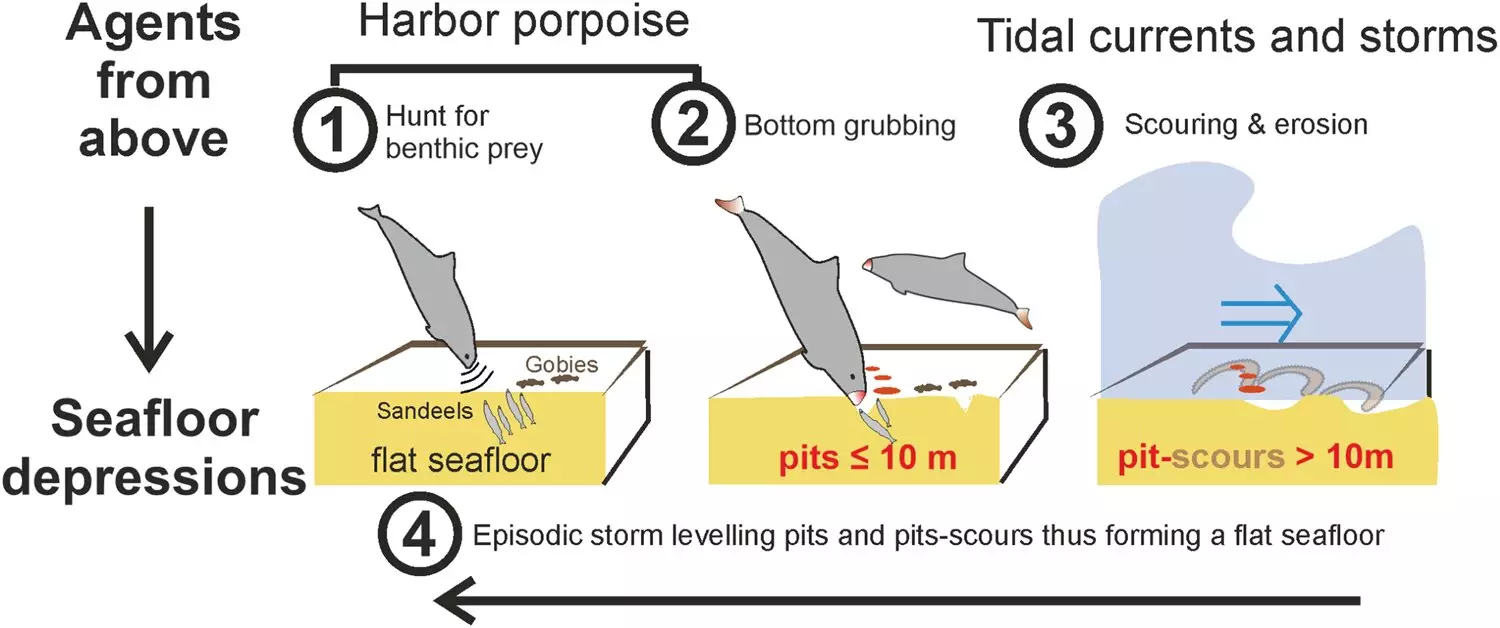The world’s oceans are home to a rich diversity of marine life, with countless creatures that settle, spawn, dig, or feed on the seafloor. These creatures not only play a vital role in maintaining the ecological balance of the oceans but also have a direct impact on the shape and formation of the ocean floor. A recent interdisciplinary study conducted by researchers from Kiel University, in collaboration with experts from biology and oceanography, has shed new light on the relationship between vertebrates and the formation of crater-like depressions on the seafloor of the North Sea.
The Mystery of Pockmarks
The seafloor of the North Sea is dotted with thousands of crater-like depressions, known as pockmarks, which are formed in the sediment. While scientists have long believed that most pockmarks are created by fluid discharge, such as methane gas or groundwater, many remain unexplained. However, the findings of this groundbreaking study challenge the traditional understanding of pockmark formation. The researchers discovered that these depressions are directly related to the habitats and behavior of porpoises and sand eels, providing a new explanation for the importance of vertebrates in shaping the seafloor.
Exploring the Connection
To unravel the mystery behind the formation of these depressions, the researchers conducted extensive investigations and analyses of the seafloor in the North Sea. They used high-resolution data and examined the behavior of vertebrates, particularly porpoises, along with the movements of sand eels. Their findings revealed a strong correlation between the presence of these marine creatures and the formation of pits on the seafloor. These pits, referred to as “porpoise feeding pits,” are created when porpoises hunt for buried sand eels. Unlike the deeper and more conical pockmarks, these pits are shallower and exhibit distinct morphological characteristics.
The study identified over 42,000 porpoise feeding pits in the North Sea, with an average depth of just 11 centimeters. These pits differ significantly from traditional pockmarks and are believed to be formed through a combination of porpoise feeding behavior and the scouring action of bottom currents. The research team revolutionized the understanding of seafloor formation by proposing that the global occurrence of crater-like depressions may be attributed to the activities of vertebrates, such as porpoises and sand eels. This new interpretation challenges the long-held belief that these depressions are solely the result of methane gas leaks.
The success of this study can be attributed to its multidisciplinary approach, which combined geological studies, geophysical sonar measurements, vertebrate behavior and feeding biology, satellite evaluation, and oceanographic analysis. By analyzing vast amounts of data collected from research vessels, the researchers were able to pinpoint the exact locations of these pits and gain a greater understanding of the underlying mechanisms. Modern technology, such as advanced echosounding methods, played a vital role in this investigation, allowing for precise measurements of the seafloor and the detection of methane gas concentrations.
Global Implications
The findings of this study have far-reaching implications, not only in terms of geological research but also for marine environmental protection and the offshore sector. The scouring of sediments by vertebrates, on a global scale, can greatly influence the structure and composition of benthic ecosystems. In the study area alone, the pits cover approximately 9% of the seafloor and have resulted in the deposition of over 773,000 tons of sediment. Understanding the ecological risks associated with offshore activities, such as the expansion of renewable energies, is crucial for informed decision-making and effective marine environmental management.
The groundbreaking research conducted by the team at Kiel University has provided new insights into the role of vertebrates in shaping the seafloor. By demonstrating the connection between porpoises, sand eels, and the formation of pits on the North Sea seafloor, the study challenges previous assumptions about the origins of pockmarks. The multidisciplinary approach and innovative use of technology have paved the way for further research in this field, with potential applications in marine environmental protection and offshore activities. This study serves as a reminder of the interconnectedness of marine ecosystems and the importance of understanding the intricate relationships between different species and their habitats.


Leave a Reply